Best Niches For Affiliate Marketing (Based On Current Data)

Disclosure: If you make a purchase through our links we are compensated at no cost to you.
Living the life of your dreams revolves around a few key factors, and financial independence is one of them.
Mastering affiliate marketing means you can achieve such financial independence and at the same time, know you’re telling people about high-quality products that help solve their own problems. It’s a win-win.
However, before you dive headfirst into affiliate marketing, you MUST know what types of niches are best to go after.
The last thing you want is to spend time, money, and effort on a niche that just won’t cut it. Instead, it’s a good idea to focus on a niche where your profitability is high (and the competition is low).
If you like the concept of affiliate marketing and want to ensure you’re working within the right niche, this article is for you. Keep reading to learn more.
What does “best affiliate niches” even mean?
First, let’s clarify a few things.
If you’re reading this, I’m assuming you understand the concept behind affiliate marketing. You like the idea of selling someone else’s products on their behalf. You also like the idea of getting a commission when someone buys said products.
However, what defines a “best affiliate niche”?
While the definition might be somewhat subjective, here are the main factors I consider important when comparing affiliate marketing niche ideas.
The number of affiliate programs
Markets that have been around longer generally have more affiliate programs you can become a part of. The more affiliate programs that exist, the better the chances of finding a program your audience will love.
This isn’t to say you shouldn’t go after a new or trending niche. Being one of the first to promote something has its perks. You won’t have as much competition, for one. Moreover, your target audience won’t have seen the same advertising before.
However, with new markets, the number of affiliate programs will be limited. There won’t be as many options to work with.
Understanding the range of affiliate programs you can work with (before choosing a niche) is essential.
The blue ocean vs. red ocean concept is an important one to consider in this regard.
While you probably won’t be able to create a new marketplace (where the competition is irrelevant), you should aim to be on this “blue side” of the equation as much as possible.
Affiliate programs accessibility
How easy is it to get accepted into the affiliate program you want?
Some markets make the barrier to entry so low that everyone can get in.
In some situations, it takes filling in a quick form, hitting “submit”, and your affiliate links are ready to go. You’re in business!
Consider Amazon. With Amazon’s lower entry barriers, becoming an Amazon affiliate is super easy.
In other markets, it takes a lot more to get accepted.
You’ll have to:
- Fill in a form
- Prove you qualify based on many factors
- Provide additional documents
- Wait for an approval process (which might take weeks)
Only then will you be able to start your promotions.
If you’re in a hurry to get started, this might sound like a long process. It is.
However, if you don’t want to compete with potentially thousands (or even more) affiliates all promoting the same stuff, it might also sound like a dream.
Average commission rates
Want to make a million dollars with affiliate marketing? You have a few options:
- You can sell one person an item that comes with a million bucks in commission.
- You can sell 10 products, each earning you $100,000 in commission.
- You can sell 100 products, each earning you $10,000 in commission.
- You can sell 1,000 items, each earning you a $1,000 in commission.
You get the point. Knowing the average commission rates in your desired affiliate niche is key. This knowledge helps you plan better.
It might make more sense for you to focus on quantity. You might be in an industry where there are a lot of people consistently buying products.
In this case, having a shorter sales cycle (where people make quicker decisions) can lead to success.
On the other hand, some industries have a longer sales cycle. In this case, you should probably focus on more expensive stuff (i.e., high-ticket items) that offer larger commissions.
Is high-ticket affiliate marketing the way to go?
The concept of high-ticket affiliate marketing always gets people excited. After all, what’s better than making a lot of money by selling less products?
Let’s look at the data according to Phonexa.
High-ticket affiliate marketing commissions start at about $500 per sale and can soar to much higher numbers. In fact:
- Nearly 4% of affiliates earned over $150,000 a year.
- About 8% brought in between $100,000 to $150,000 each year.
Looking at the insurance world (one of the categories in their study), commissions are quite varied:
- Health insurance: You can earn between 5% and 40% of the customer’s first payment.
- Life insurance: It’s between 20% and 100% of the initial payment.
- Car insurance: Expect $25 to $200 per policy.
- For homes? $30 to $150 per policy.
- Travel insurance? You’re looking at 10% to 50% of the initial payment.
- In finance and investments, you might earn between 20% and 40% of the net revenue the user brings in.
Here’s a table comparing the various factors in traditional affiliate marketing (low product cost) vs high-ticket affiliate marketing:

Image credit: Phonexa.com
The above might all sound great. However, consider that choosing lucrative affiliate marketing niches increases the chances competition is stiff.
Speaking of competitors…
Marketing competition
Half the game of affiliate marketing involves marketing. Duh.
However, I feel that most people forget they will need to market the products in question. For example, if you’re going to use (SEO) search engine optimization to get people to your landing pages, you need to understand the competitive landscape.
If a product pays thousands in commissions, but it will take you years to get to the first page of Google for your chosen keywords, you might want to rethink your affiliate niche.
While there are probably thousands of keywords you can rank for in any given niche, only a few will get you potential buyers.
Here are some questions to consider:
- How much content will you need to become an authority in your chosen niche?
- What’s the cost (time and money) involved in creating such content?
- How many backlinks will you need to start getting traction?
- How many additional backlinks will your competitors have built by the time you get to their level?
Maybe you’re not planning on using SEO to drive your marketing.
Maybe you’re planning on using paid advertising to get people to your landing pages. In this case, you should also know what your competitors are doing and your industry’s average commission rates.
With paid media, there’s a very tangible cost every time someone lands on your landing page.
Knowing your numbers is key.
When you know:
- how much you can expect to pay to get a sale and
- how much money you’ll make in return
…it’s easier to decide whether a specific affiliate niche makes sense for you.
How we chose these affiliate marketing niches
Here’s how I chose the specific niches (don’t worry, I’ll get to them in a second).
In this video, Matt Diggity reviews the best affiliate niches in 2023 based on factual data.
What I like about this video is that Empire Flippers provided the base information. This platform is a curated marketplace to buy and sell an online business. This makes accurate data a foundation in their business.

Using factual data to base your affiliate marketing decisions gives you a better chance of success. Factual data saves you a ton of trial and error (i.e., time and money).
Compare this to taking a shot in the dark where you end up testing multiple niches (while praying something sticks). Not a good game plan.
Back to Matt and his research. Here are the factors he looked at:
- Niche Performance: Matt was curious about which topics gave the most results for the least investment.
- Earnings vs. Costs: Matt checked how much successful websites made compared to their expenses. He considered content and link-building in this case.
- Earnings vs. Time: How worthwhile was the income in terms of the hours spent?
What were the results of the study?
Here’s something I didn’t expect: the religion and spirituality niche were the star performers.
Besides that, websites about jewelry and lifestyle were also among the top niches.
Investing in content
Content is a big part of marketing. There are four stages to the customer journey:
- Problem unaware
- Problem aware
- Solution aware
- Product aware
Content takes people from the first stage to the last. It’s important to invest in building the right type of content in affiliate marketing.
Here’s what the research found about content:
- Websites about medical topics seemed to get the most value from their content. People may be hungry for reliable health information.
- Bed, bath, and kitchen topics also saw good returns from their content. It could be that people are now spending more time at home and want to make their spaces comfortable and functional.
Spending money on backlinks
Backlinks are still a vital part of any marketing campaign relying on SEO.
The more backlinks you build, the higher your authority in Google’s eyes. Matt’s study also dived deep into the industries where building backlinks made the most sense.
Matt found that sites discussing office supplies, medical stuff, and bed and bath themes stood out in backlink terms.
Return on time
How much money is an affiliate site making compared to the time people invest in it?
That was the next question Matt set out to investigate. The survival and security niches are at the top of this category. However, Matt did caution that this data might have some inconsistencies.
His reasoning? People may outright lie when listing the time they spent working on their sites.
As such, Matt advises people to take this particular dataset with a grain of salt.
The best affiliate marketing niches
Here are the best affiliate marketing niches I’ll be talking about in this article.
- Religion and spirituality
- Jewelry and lifestyle apparel
- Bed, bath, and kitchenware
- Office accessories
For each niche, I’ll explore its various sub-niches. I’ll also go into why people buy certain products and how you can best market to these future customers.
1. Religion and Spirituality
Many people are searching for moments of calm and clarity in their lives. Meditation products cater to this growing need.
As an affiliate marketer, tapping into this niche offers the chance to be part of a meaningful movement. It’s also an opportunity to connect with an audience deeply invested in their mental well-being.
Here are examples of products to promote as an affiliate in the religion and spirituality niche.
Meditation Cushions and Mats
A meditation cushion or mat isn’t just about comfort—it’s about creating a space just for meditation.
Prices vary and depend on the brand, what it’s made of, and its design. For instance, there’s a Walden Meditation set with a cushion and a mat for $195.

Some high-quality cushions, like the Quiet Mind Weighted Pillow, come at $199. The Premium Secret Garden Cushion set comes in at $189.

Quite a price tag for cushions and mats. Great news, however, from an affiliate marketing point of view.
Tibetan Singing Bowls
Tibetan singing bowls have been used in Buddhism and meditation for centuries. They are said to help create a calming atmosphere, promote inner peace, and reduce stress and anxiety.
How much do they cost? It depends on how big they are, how old, their quality, and where someone buys them.
Customers might be looking at bowls with prices that range anything from double digits to high-end three digits.

Yoga Retreats in Bali
Immersing oneself in the tranquil Balinese environment for a 7-day yoga and meditation retreat is generally on the higher end of the price spectrum.
Prices for such retreats start from around $700 to over $1,200 for more premium offerings.

Some retreats, like the Eco-Luxury Yoga don’t disclose pricing online, hinting at a premium experience.

The variance in cost may cover different qualities of accommodation, meal plans, and the level of personal attention received during the yoga and meditation sessions.
As an affiliate promoting such retreats, the focus is on the holistic experience as opposed to just getting a good deal.
Online Course on Chakra Balancing and Healing
Online courses on chakra balancing and healing cater to different budgets and levels of interest.
For instance, a Chakra Healing Certification Course is priced at $799 for practitioners.
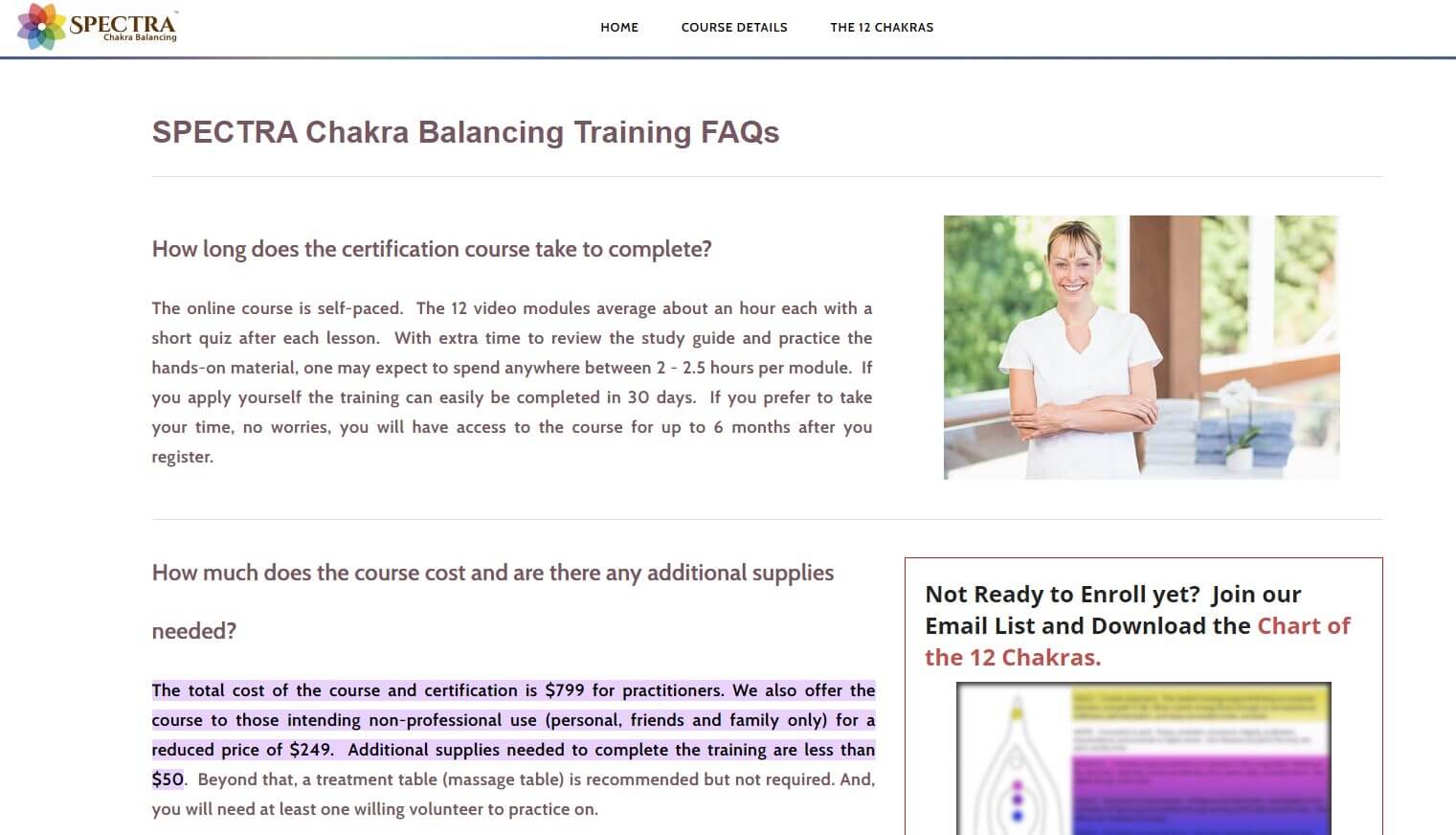
Targeting people interested in helping others with their chakra healing journey, the affiliate marketer can help people find the right course for their expertise and budget.
What’s the profit potential in this niche?
With the rising awareness of mental health and wellness, products related to meditation hold great potential. The market is growing, and so are the opportunities. However, while the profit potential is high, it’s essential to remember that many people are catching on to this trend.
As for the difficulty, you’re stepping into an expanding market, which is good. But remember, with growth comes competition.
The challenge?
Differentiating your offerings from the rest.
How can you stand out? How can your products or the way you market them be unique?
Here are some examples of ways to set yourself apart:
- Offer a specialized selection of products. If you have an affiliate store that specializes in yoga equipment, be sure that you have a wide selection of different types of products to meet your customers’ needs.
- Emphasize quality and craftsmanship for your offerings. People want to spend money on something that will last, so ensure your products are of the highest quality and workmanship.
Here are some examples of religion and spirituality affiliate programs from various vendors.
Sounds True
Sounds True is a multimedia company offering various products. Products include audio materials, books, online courses, and events focused on personal growth and spiritual transformation.

Here is an example of one of their products.
Meditation and Psychotherapy Course: Priced at $247.

They offer a 35% commission to their affiliate. With a price point of $247, the commission on a single sale would be:
$247 * 0.35 = $86.45
Daily Earnings: If an affiliate makes 5 sales per day, their daily earnings would be $86.45 * 5 = $432.25
Monthly Earnings: Multiplying the daily earnings by 30 days gives:
$432.25 * 30 = $12,967.50
Mindvalley
Mindvalley is a platform that provides courses to help individuals grow personally and professionally.
With a focus on spirituality, self-development, and personal growth, Mindvalley works to empower individuals to realize their full potential.

They offer a 50% commission on sales, which is a pretty good deal.

Here are their membership options:
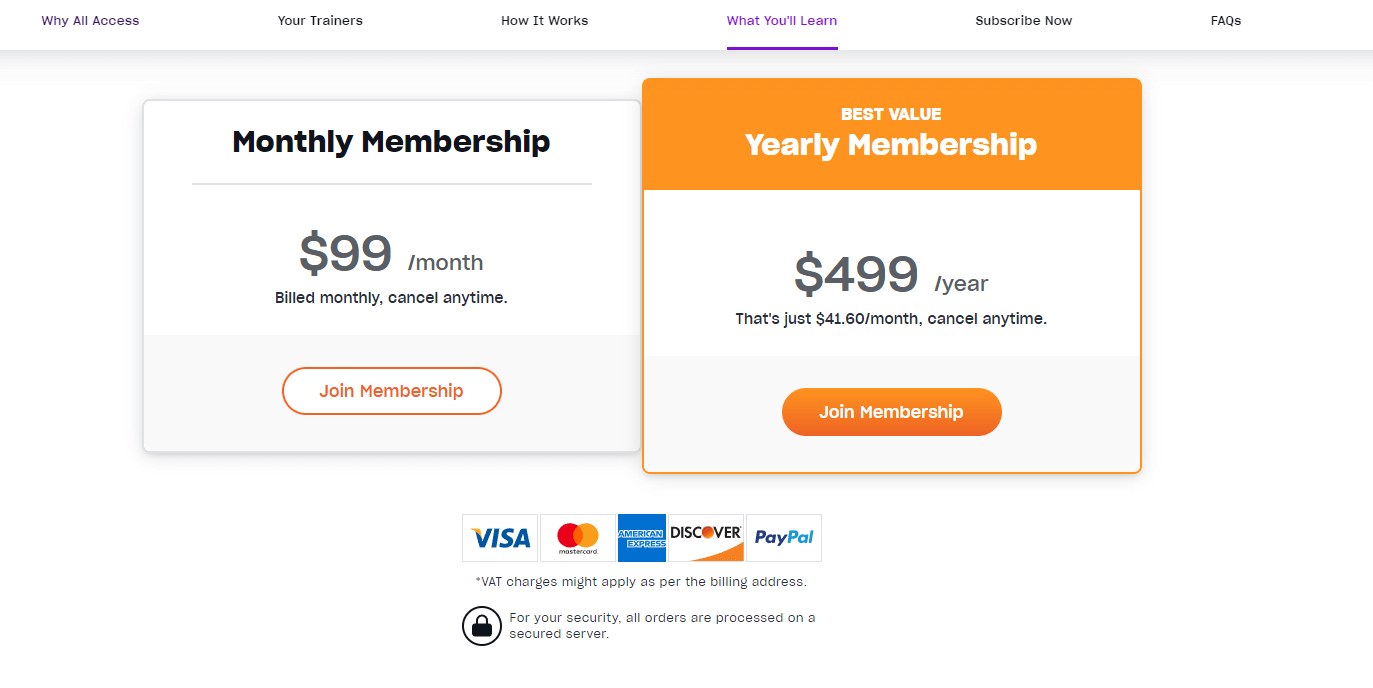
Let’s run some numbers:
Mindvalley Membership:
- Price: $499/year
- Your Cut: 50% of the sale price: $249.50 per sale
Now, if you make, let’s say, 1 sale a day, how much would you make?
- Daily: 1 sale a day equals $249.50 a day.
- Monthly: If we consider a month to have 30 days, that’s 1 sale x 30 days x $249.50 = $7,485 a month
- Yearly: Stretching it out over a year, that’s 1 sale x 30 days x 12 months x $249.50 = $89,820 a year
2. Jewelry and lifestyle apparel
Jewelry is a niche where people are willing to pay a premium for quality. Whether it’s for status, style, or a gift, people love to invest in pieces of jewelry that are unique and one-of-a-kind.
As an affiliate, you have various types of products to promote. Firstly there are classic pieces that never run out of style. These pieces generally include rings, necklaces, and bracelets.
The second option is to feature the latest trends and popular collections during certain times of the year. Depending on your audience, you can promote anything from statement pieces for fashionistas or minimalistic pieces for minimalist lovers.
Luxury items such as watches and designer pieces are also popular.
Promoting these items requires more effort as they usually come with a high price tag.
Handcrafted Artisan Jewelry
Handcrafted jewelry has a special kind of charm.
It’s not just about appearance—it’s about the story and the craftsmanship behind each piece.
Take handmade turquoise necklaces and silver cuff bracelets, for instance. They showcase detail and passion. And beaded earrings from indigenous communities? They’re rich in tradition.
Handcrafted jewelry has varied prices. The uniqueness, the materials, and the brand behind it all play a role.

Prices could be as pocket-friendly as $16 on Etsy or climb to a premium $600 with artists like Jenne Rayburn.

As an affiliate, there’s huge potential in this niche. Unique means more valuable so standing out is the key.
Sustainable and Eco-friendly Accessories
The world is getting greener.
Items like bamboo sunglasses, recycled leather wallets, and organic cotton scarves are all in vogue.
Sustainable and eco-friendly accessories have the added bonus of being guilt-free. And with fashion constantly trending, there’s always something new to offer customers.
Prices for these eco-friendly pieces vary. Key factors include the materials and how green the brand’s practices are. Brands like Tentree have items priced between $14 and $298.

Afends, another conscious brand, has prices spanning from $40 to a little over $100.

The challenge with this sub niche is offering authentic products, being genuinely eco-friendly, and keeping everything affordable.
Luxury Watches and Timepieces
Timelessness is the essence of luxury watches.
Brands like Rolex Submariner, Omega Seamaster, and Cartier Tank aren’t just about checking the time. They’re about status, class, and legacy.
This market also has a vast price range with starting prices generally coming in at thousands of dollars.
Swiss brands like Audemars Piguet can range anywhere from $34,000 to $200,000+.

Van Cleef & Arpels has watches from $7,800 to $448,000.

As an affiliate, there’s immense potential. You must understand the legacy, the craftsmanship, and the aspirational value behind these brands to be successful.
What’s the profit potential in this niche?
It all depends on the kind of affiliate program you join and the commissions they offer.
However, it’s safe to say that when it comes to luxury jewelry and lifestyle apparel, there’s lots of money to be made.
Here are two different affiliate programs to consider.
James Allen Affiliate Program:
James Allen is renowned for its exquisite range of diamonds and other gemstones which can be customized into jewelry pieces like rings, necklaces, earrings, and bracelets.
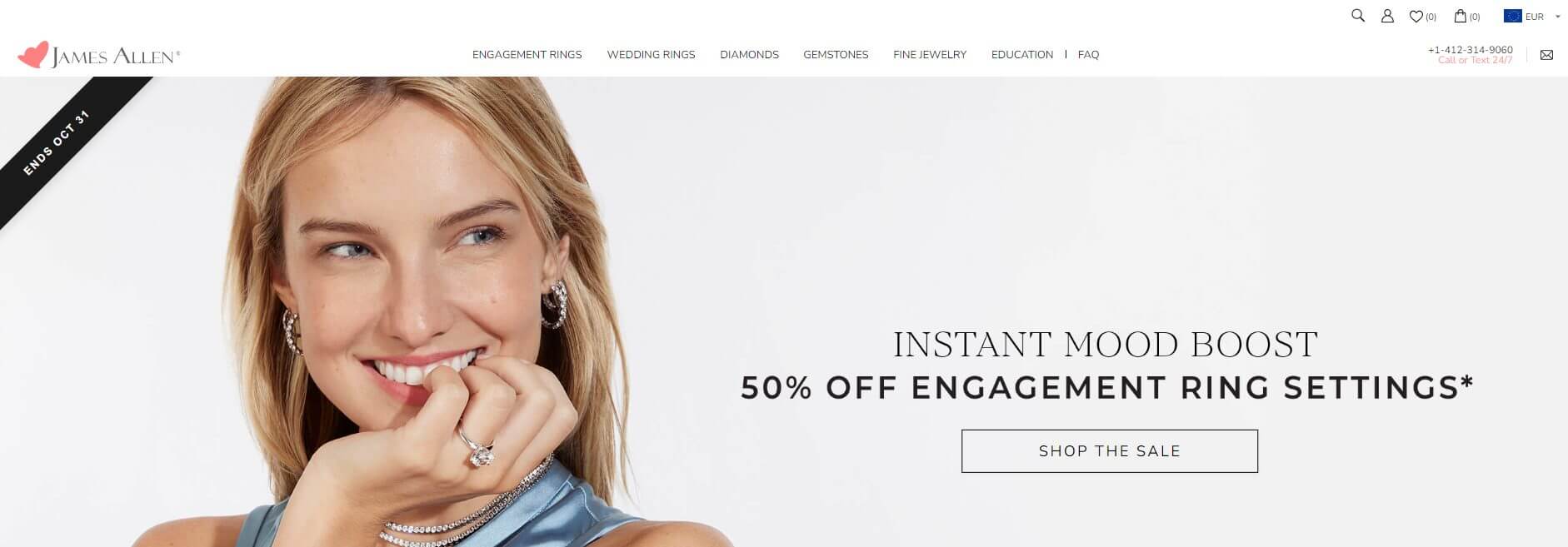
Average Pricing Points:
- Lower-end products, such as a less impressive 0.3-carat diamond, may cost around $200.
- Mid-range diamonds have an average price of about $2,128 to $3,557.
- High-end diamonds like a 5-carat one can skyrocket to more than $800,0002.

With a commission rate of 5%, here’s a simplistic projection of what an affiliate could earn:
- Daily: If an affiliate manages to sell one mid-range diamond daily, at an average price of $2,843 (average of $2,128 and $3,557), they’d earn $142.15 daily.
- Monthly: This translates to about $4,264.50 given the same daily sales rate.
Urban Outfitters Affiliate Program
Urban Outfitters offers a trendy assortment of lifestyle apparel, accessories, and home decor items.

The pricing can range from around $10 for smaller items and accessories to over $200 for larger apparel items and home decor.

With a 5% commission rate, here are some examples of potential earnings:
- Daily: If an affiliate sells products totaling $500 in value daily, they’d earn $25 daily.
- Monthly: This would amount to about $750 monthly, given the same daily sales rate.
As an affiliate, your commission on jewelry and lifestyle appeal varies. Knowing what your business goals are is key.
3. Bed, Bath, and Kitchenware
The bed, bath, and kitchenware niche is vast and varied. Imagine the comfort of luxury bedding or the efficiency of a modern kitchen appliance.
These items play a significant role in our daily lives. As an affiliate, they open up various doors you could explore.
Luxury Bed Linen
Picture Egyptian cotton sheets. The feeling of its softness and breathability. They’re not just any sheets—they’re a symbol of luxury.
How much do they cost?
A mid-level designer brand may price cotton sheets around $68. The real high-end Egyptian cotton ones (like the finest Egyptian Giza) can range from $350 to well over $1,000.

When considering luxury duvet covers, such as the Sferra Classico, the current price is around $1,063.

And those luxury hotel brands? A set from The Ritz-Carlton starts at $199.

As an affiliate, you can make a killing if you can find an audience that has the money and values luxury bedding.
Sauna and Spa Systems
When diving into sauna and spa systems, prices aren’t cheap. Whether someone is considering a simple setup or a more luxurious experience, it’s crucial to understand the benefits they would get from installing a sauna or spa system in their home.
For saunas, prefab models (ready to install) can cost between $2,300 and $14,500.

But if a person is thinking of a custom-built sauna room, the price might range from $4,300 to $34,000.
Switching to hot tub systems, the average cost of installation is around $6,000.

For those interested in larger setups, accommodating 8 to 10 people, prices can go up to $20,000.

We’re talking about thousands of dollars here. As an affiliate, this can lead to a big paycheck in commissions.
High-End Kitchen Appliances
High-end kitchen appliances are more than just tools—they’re a statement. People aren’t afraid to spend money on quality appliances. As an affiliate, you can capitalize on this trend.
Here’s a breakdown of appliances along with low-end to high-end pricing.

Starting with refrigerators, while the lower-end models cost around $430, the premium ones cost as much as $10,600.
Ranges? They can start at $410 and go up to $7,500. And cooktops can go from around $320 to a considerable $4,030.
You can see where this is going. I think most buyers are simply looking for quality features. People buying high-end appliance brands are looking for more than a functioning product. They want something to add value to their home and be proud of.
What’s the profit potential in this niche?
Quite high. The demand isn’t limited either. People will always want to upgrade their homes with the latest technology and fashion trends.
If you want to get in on this niche, one of the most important things you need to do is establish yourself as an authority. People in this market look for credible, high-end brands. When they find the right person/brand to listen to, they won’t hesitate to pay more for the best.
KitchenAid
KitchenAid is a well-recognized brand, notable for its high-quality kitchen appliances. It’s a reliable companion when it comes to culinary adventures.

Let’s say your target audience is interested in stand mixers. KitchenAid, on average, prices these mixers at around $300.
The affiliate agreement states that KitchenAid offers an 8% commission rate.

Suppose you sell just one mixer a day at $300. Here’s what your earning snapshot would look like:
Daily Earnings:
With an 8% commission, the daily earnings would be $24 (8% of $300).
Monthly Earnings:
Multiply that $24 by 30 days, and the monthly earnings add up to $720.
That’s just from one product over a 30-day period. Chances are that people who visit the KitchenAid site are also interested in related products.
Bed, Bath and Beyond
Let’s look at Bed, Bath and Beyond as another affiliate program.

They offer a 3% commission rate to their affiliate.
While this isn’t the highest, it can still be a decent source of income. Provided you can generate the traffic and conversion rate, it will add up.

Here’s a case in point: a chandelier that costs $121,340.

When it comes to the numbers, I think that selling such a high-ticket item (priced at $121,340) daily might be a stretch.
So let’s assume you can only make a sale once every three months. Here’s what your earnings would be:
- Quarterly Earnings: With a 3% commission rate, selling one chandelier every three months would equate to $3,640.20 for that quarter.
- Annual Earnings: If this pace continues throughout the year, the annual earnings would amount to $14,560.80
You might be thinking that’s not a lot of affiliate commissions. At the same time, consider that income would come from just 4 sales.
Framed that way, I don’t think it’s tough to imagine that happening if you have the right audience and affiliate marketing strategy.
4. Office Accessories
Whether you’re tucked away in a home office or working in a non-stop corporate environment, the right office accessories can make all the difference.
These accessories not only streamline tasks but also enhance comfort and efficiency. Mind you, I’m not talking about pens and pencils there. I’m talking about high-end office furniture and electronics.
If you’re looking for a profitable affiliate marketing niche that’s always in demand, office accessories could be a great place to start.
Ergonomic Office Furniture
Keeping your body healthy and comfortable while you work can be done with the right office furniture.
Adjustable standing desks have become quite the favorite. Prices vary based on features.
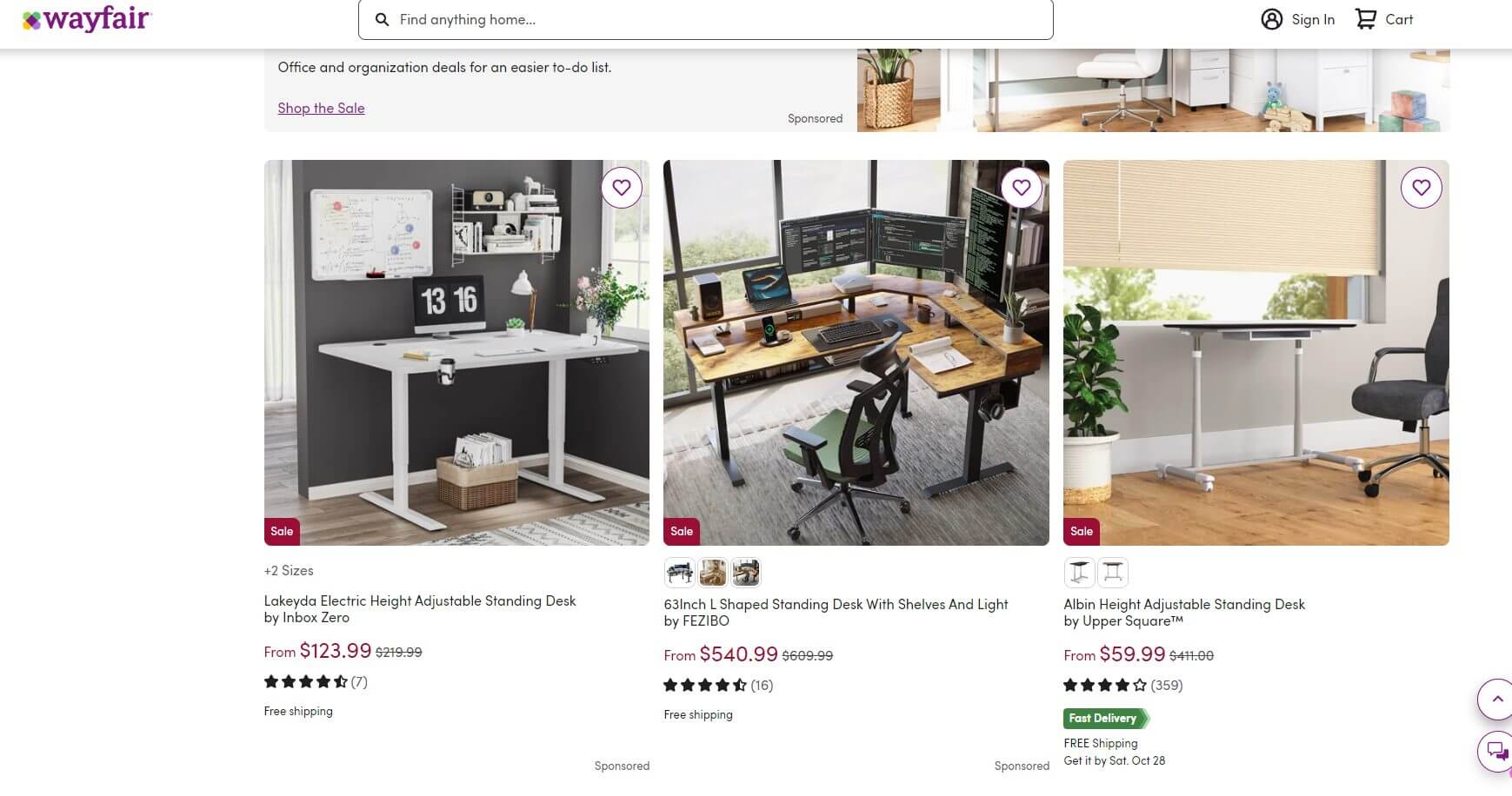
Another essential tool for any long workday is an ergonomic chair.
Prices start around $200. For those seeking a mid-priced product, chairs between $200 to $400 provide good comfort and support.
But for a touch of luxury, chairs like the STUA Gas Task Chair are available for $1000+.

I’m sure you can already see how this can provide a great affiliate payday.
Tech Gadgets
Cool tech gadgets make the workday more productive. Here are a few examples of in-demand tech gadgets.
- Wireless Charging Mouse Pad: A neat solution to wire clutter that also keeps your mouse charged all day. The Logitech G Power Play Wireless Charging Mouse Pad is on the higher end of the spectrum at $116.

- Noise-Canceling Bluetooth Headphones: Ideal for uninterrupted work or music sessions, they generally start at around $150. For those who prioritize top-notch sound quality, models like the Sennheiser MOMENTUM 4 Wireless are tagged anywhere between $298 and $380 (depending on where you buy them).

High-End Office Electronics
High-end office electronics cater to a segment of buyers who desire function, luxury, and top-notch performance. High-resolution widescreen monitors are a testament to this philosophy.
As an affiliate, you can sell monitors like the LG UltraGear 27GP850-B (priced at $347.14) or the Samsung Odyssey G55A (at $326.99).

Here, the emphasis isn’t just on clarity. It’s also about creating an environment conducive to multitasking. This could be one of the angles you use to market these products.
And then there’s the world of premium printers.
Brands such as HP and Epson offer models that aren’t merely about printing. They’re about delivering speed and convenience to fast-paced businesses.
On the higher end, there are 3D printers like the Ultimaker S5 at $6,950.

For an affiliate marketer diving into this sub-niche, the profit potential is quite addictive.
High-end products means higher price tags and higher commission rates.
Again, successfully marketing these products means a deep understanding of the features and a focus on their premium benefits.
What’s the profit potential in this niche?
The potential is great. There’s also an added bonus: the potential for recurring income.
Moreover, companies generally buy office supplies in bulk. This means your commissions can add up quickly. Plus, there’s usually a steady flow of new products to promote.
With more niche products like 3D printing solutions and other advanced technology, you can expect even higher commission rates due to their more specialized nature.
Here are a few companies whose products you can promote (along with their affiliate commission rates).
Hard Disk Direct
Hard Disk Direct is an example of a computer hardware and components supplier. They offer hard drives, processors, motherboards, and other much-needed devices.

They offer a 5% commission on sales.

Let’s assume you decide to promote Hard Disk Direct products. You managed to make 5 sales per day of the following UPS (interrupted power supply). This has a resale value of $680.99.

These are the numbers you’d be looking at:
- Daily Earnings: 5 sales x $680.99 x 5% commission = $170.24
- Monthly Earnings: $170.24 x 30 days = $5107.43
- Annual Earnings: $5107.43 x 12 months = $61289.1
Totally Furniture

Totally Furniture is a business based in Florida that has been selling home and office stuff for more than 20 years.
Their aim: to provide good products, fair prices, and help customers well. Do you think this is something you can work with as an affiliate?
Their affiliate program offers a 6% commission rate.

Let’s take this conference room cabinet:
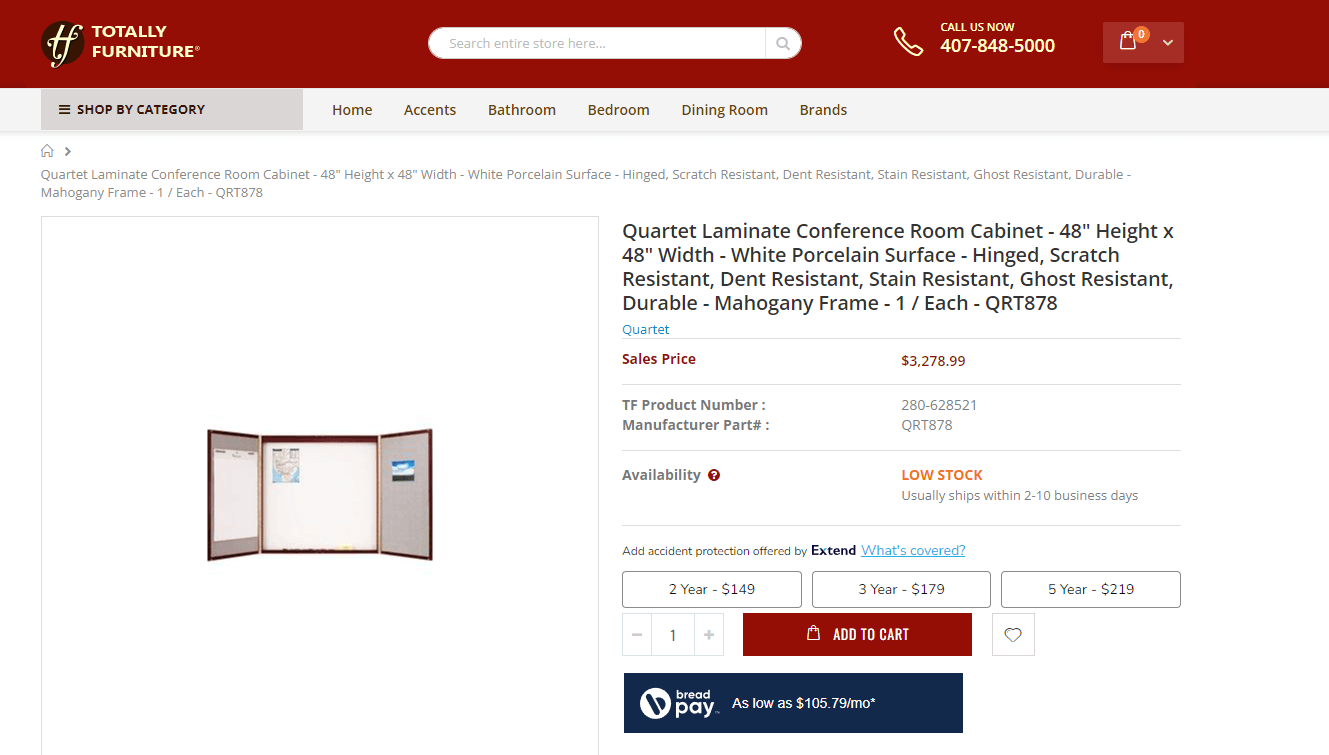
It sells for $3,278.99. At a 6% commission, you get $196.7 for every piece sold.
On its own, this might not look like much. However, your total commission would add up when businesses buy other accessories, furniture, and décor items.
Image someone opts for a few other items:

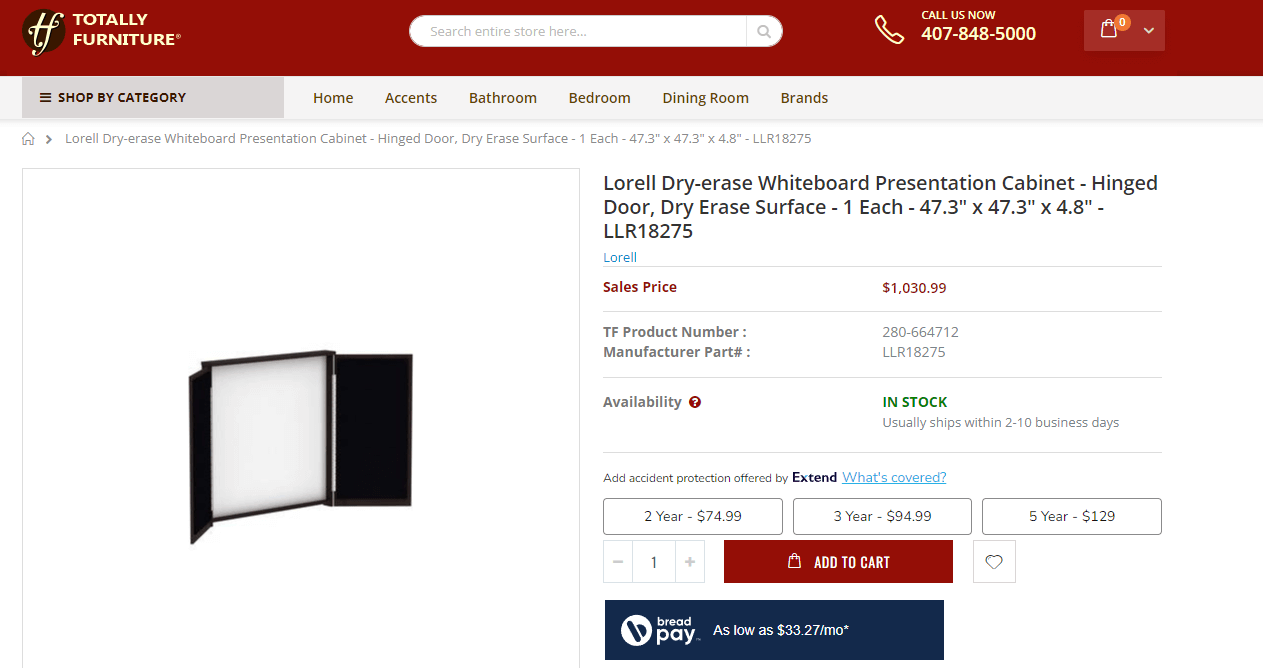
Throw in a conference table, a dry-erase whiteboard, and a few other items. Your commissions will add up.
Don’t choose an affiliate marketing niche without considering these key factors
Knowing which affiliate marketing niche pays well is the first step in your niche selection.
Different niches have different potential for commissions. It’s key to look at all the available opportunities and make a well-informed decision.
However, I urge you not to make any rash decisions YET. In this section, I’ll go over the key factors you should consider before diving into a niche.
Being able to frame your decisions in terms of these factors can help you save tons of frustration and lost revenue.
Ultimately, this means more money in your pocket.
Important Note: Some niche-selection concepts are the same as when starting a blog. The foundations of marketing stay the same whether you’re promoting an affiliate niche or creating a niched blog.
The Brand of You
Whether you’re just starting with affiliate marketing or have been in business for some time, it’s essential to understand WHO YOU ARE first.
Think about what you like and what you’re good at. People prefer to work with those they know, like, and trust. When you pick a topic close to your heart, it feels less like work and more like sharing something you love.
The concept of the Brand of You is something Adam and Colin go over in depth in Blog Growth Engine.

Think about how your personal experiences and skills can make your affiliate promotions stand out. From a customer’s point of view, isn’t it easier to connect with someone real rather than a faceless brand (that said you can still make it work with a faceless Instagram account if you follow the right process)?
Think about big names like Tony Robbins and Tim Ferriss. They started with their personal brand and then expanded into different areas. Your affiliate business can do the same.
Moreover, think about this from a search engine perspective. Content that follows the EEAT (Experience, Expertise, Authoritativeness, and Trustworthiness) principle will help improve your rankings and visibility.
The Authority Flywheel
Another concept from our Blog Growth Engine course is The Authority Flywheel.

In the course, Colin and Adam introduce this as a wheel that keeps spinning faster and faster each time around.
It’s about using your expertise, a market you know, and any leverage points you have going for you.
Where does your expertise come from?
Expertise could come from your job, life experiences, or even things you’re still learning. This expertise is valuable (probably even more than you think). It’s the secret weapon that can help you stand out.
When picking your niche, consider how your expertise can add value to that topic. Doing so can help you create helpful content that speaks to your audience.
Are expertise and passion the same thing?
Great question. No, they’re not. These two concepts are different in that sometimes, you can be an expert in something without being passionate about it. Millions of people make a lot of money doing something they don’t particularly enjoy, and that’s okay.
What about the market?
The market is next on the flywheel. Choosing a market is different from choosing a niche. In this case, you’re looking broadly at who your content should be aimed at.
For example, if you’re passionate about teaching yoga, the niche might be “beginner yoga tips” but your market could be people aged 18-35 who are looking to start a yoga practice.
The right market is key because it helps you understand what type of content your audience wants and needs. It also allows you to hone in on specific keywords that resonate with your target audience.
Then consider leverage.
This is all about using what you have to get ahead. Maybe it’s your past experiences or people you know. The right leverage gives you a head start.
In affiliate marketing, leverage can come in many forms.
Whether it’s in:
- an email list you have
- SEO content you’ve created
- influencer outreach and relationships you’ve built
- or even paid marketing initiatives others can run for you
…if you have something you can use as leverage, do so.
Mindset
When choosing your niche and starting your affiliate marketing journey, you might feel out of place.
This feeling is often called “imposter syndrome.” Some describe it as feeling like you don’t belong or aren’t good enough.
However, here’s the thing: every affiliate marketer, even the successful ones, has felt this way at some point.
Here’s more about imposter syndrome when starting a blog:
Want to know the best solutions to beat imposter syndrome?
Here are the main concepts to remember:
- Start promoting products, even if you’re unsure. Confidence builds as you see results.
- It’s okay to feel out of your depth. That’s how you learn about new products or niches.
- Don’t obsess over every click or sale. Focus on providing genuine recommendations and the process that comes with it.
- Share your affiliate marketing journey. Talk to others in the community. Some will have the same doubts and can help you realize you’re not alone. Some will be further on in their journey and can help you with yours.
Level of Competition
Before diving into any niche, it’s smart to check out the competition.
Some niches are like big cities. Take software for example. There are many players, and standing out can be challenging.

On the other hand, niches like camping might be more like quiet towns. Fewer people, but also fewer competitors. It’s essential to know what you’re stepping into.
Using Data and SEO Tools
Let’s keep going with the hike example. Before you start, you’d want to know the trail, right? SEO tools act like your trail map for affiliate marketing. They can:
- Show the Traffic: Just like seeing how many hikers are on a trail, SEO tools can tell you how many people visit certain topics or niches.
- Ranking Insights: Ever wonder how well a site is doing? These tools can show where a site ranks on search engines. It’s like knowing if a trail is popular or if it’s a hidden gem.
- Keyword Analysis: Discover what terms or phrases people are searching for. It’s like finding the best spots for rest or a view on your hike.
Let’s say I want to get into the jewelry niche. Here are the steps I would follow using Google and an SEO tool like Ahrefs.
Understanding Traffic Patterns:
- Step 1: Find a high-authority website in the niche through Google. In this case, I’m going to use JamesAllen.com as an example.
- Step 2: Open Ahrefs and navigate to the “Site Explorer” tab.
- Step 3: Enter the URL of a website within the niche you’re interested in.
- Step 4: Analyze the data under the “Overview” and “Organic Search” tabs to understand the amount of traffic the website receives and the keywords driving this traffic. This will give you an idea of the popularity and viability of the niche.
Right off the bat, here are some findings:

I can see that their traffic consistently increased over the years.
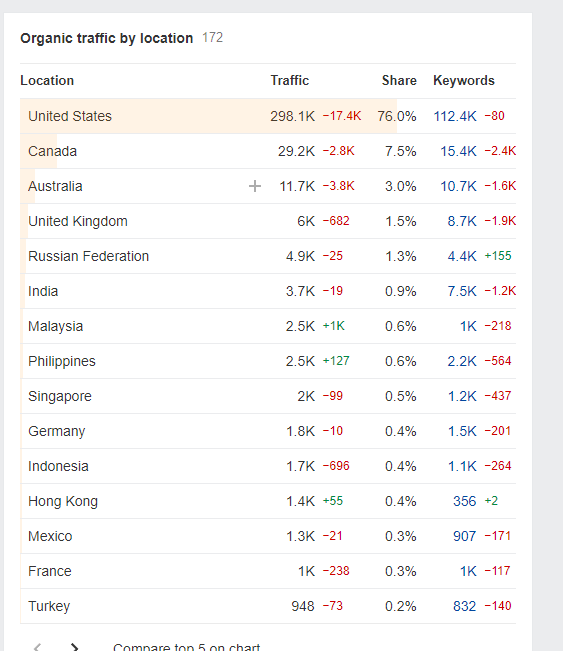
I can also notice that US traffic makes up more than 75% of their traffic.

Next, I see that their “ring sizer” page is the page that gets the second most amount of traffic on their site (apart from their homepage). This might indicate that people are interested in their ring size first before making any further decisions.
Let’s take this a step further by looking at ranking insights:
- Step 1: Look at the “DR” (Domain Rating) scores under the “Overview” tab to gauge the site’s authority and backlink profile.
- Step 2: Navigate to the “Organic Keywords” tab to see where the site ranks for specific keywords. This information can tell you how competitive the niche is and what kind of SEO strategies are working for successful sites.
Here’s the information from JamesAllen.com:
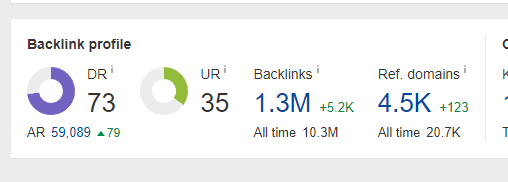
They have a relatively high domain rating, which is expected. As a high-authority site in their niche, they should have a strong backlink profile.
Let’s have a look at the organic keywords they’re ranking for:

First off, they’re ranking for several brand keywords. Expected.
They’re also ranking for keywords that are getting a huge amount of search volume but which aren’t that high in keyword difficulty.
Let’s search for KD (keyword difficulty) of up to 30 (this is on a scale of 0-100). I’m also putting in a filter to only show keywords that have at least 500 in terms of monthly search volume.
Here are a few interesting keywords that I could go after (if I’m doing SEO) and that show me that the competition level on such keywords is quite low:

Comparing to Others in Your Niche
Based on the research conducted, here’s how you might further go about analyzing the strengths, weaknesses, and opportunities within your chosen niche.
Let’s explore a different niche and consider the ergonomic office furniture niche.
Here’s what I was able to find after some research.
Strengths:
- Growth: The market for ergonomic office furniture is experiencing substantial growth, with ergonomic chairs gaining popularity. This is attributed to their well-designed features that promote proper posture and alleviate bodily stress. The global market for ergonomic chairs witnessed a significant value of $8.5 billion in 2021. Experts predict a remarkable surge, with the market expected to soar to $16.4 billion by 2031. This upward trajectory reflects a notable compound annual growth rate of 6.6% from 2022 to 2031.
- Remote Work Trend: The shift towards hybrid and remote work cultures has led to a higher adoption of ergonomic office furniture, as individuals seek comfortable and health-promoting furniture for their home offices.

- Performance Enhancement: Ergonomic office furniture, like ergonomic chairs, are seen as vital tools that assist in improving employee performance.

Sounds like a niche that’s on the rise. Great. Let’s keep going.
Weaknesses:
- High Cost: The higher cost of certain ergonomic office furniture pieces, particularly high-range office chairs, could be a barrier for some consumers. It’s mentioned that consumers are in a dilemma whether to invest or not in high-range chairs due to cost concerns.
- Market Segmentation: The market seems to be segmented into various sub-categories, and understanding each segment’s unique needs and preferences might be challenging.

Weaknesses aren’t that bad. High cost can be a good thing as an affiliate. Market segmentation simply means knowing which sub-audience to best target.
Opportunities:
- Unexplored Sub-categories: The market segmentation into various subcategories might present opportunities to focus on specific, perhaps less competitive or under-served, market segments.
- Educational Content: Given the health benefits associated with ergonomic furniture, there’s an opportunity to create educational content that explains these benefits, helping to inform and persuade potential buyers.
- Social Media Promotion: Engaging content and a strong social media presence could benefit this niche. You can highlight the benefits of ergonomic furniture through visual content on platforms like Instagram or YouTube.
Lots of opportunities here. Feels like this niche is 3 for 3.
Understanding Search Intent for Affiliate Marketing
If you get search intent wrong, chances are your business will never gain traction. Get it right and the odds of having a successful affiliate marketing business increase.

Here’s another snippet from our Blog Growth Engine course talking about search intent.
Here’s how to think about search intent. Imagine someone walking into a store. They have something in mind, right? Otherwise, they wouldn’t have gone in. However, what could they be after?
They might want to buy a new pair of shoes. They could also just want to look around because they’re not quite sure what shoes are best for their next big occasion.
In the online world, search intent is all about figuring out what someone REALLY wants when they type a query into a search engine.
If you get it right, you can guide people, provide information, and then recommend (affiliate) products.
Here’s how to decode search intent and rank for more keywords:
Types of Search Intent
These are generally the four types of search intent to consider:
- Informational Intent: People looking for answers or knowledge
- Navigational Intent: Those trying to find a specific site or page
- Transactional Intent: Ready to buy or sign up
- Commercial Investigation: Doing research before buying
In the case of affiliate marketing, search intent plays a big role in understanding what users are looking for and how to target them best.
If you can correctly identify the search type and create content that matches it, you’ve found your winning formula.
When researching keywords, look at the words used by people searching.
Are they using question words like “how”, “what”, or “where”? This can help you determine their intent. For example, if your content answers questions like “How do I use a product?” then this likely falls under Informational Intent.
If people use words like “best” in their search, they’re likely looking for transactional intent. This can help identify what products/services to promote and how to target them.

In the screenshot above, someone is searching for the best protein powder. Chances are the person is very close to making a buying decision. As an affiliate, this is a great opportunity to provide content that will push them closer to making the purchase.
Being Open To Pivoting
Pivoting is more of an advanced factor when choosing an affiliate niche. Despite being as well-prepared as possible, you’ll sometimes find that the market is saturated or too competitive.
Moreover, in business, things rarely stay the same for long. Being aware of changing trends and interests is essential if you want to stay ahead of the competition.
Here’s a snapshot of Eddy (one of our BGE coaches) speaking about trends in our Blog Growth Engine course:

Affiliate marketers who aren’t open to pivoting will struggle.
If you’re promoting a product that’s no longer popular, you will miss out on sales. On the other hand, if you adapt and promote a more trending product, your bank account will thank you.
Pivoting might be in the cards in these situations:
- Changing Market Trends: The affiliate products that were popular last year might not be in demand this year. For instance, smart home gadgets might be more profitable during a tech boom than fashion accessories.
- Stagnant Growth: If you’ve been promoting a product or niche for a while and aren’t seeing growth in sales or audience engagement, it’s a sign.
- Discovering New Strengths: Maybe you started your affiliate journey with tech reviews but found you have a knack for explaining complex fitness equipment. It makes sense to pivot to where your strengths lie.
Choosing The Right Affiliate Programs And Creating High-Quality Content
Combining the right affiliate programs and creating high-quality content is essential.
When many affiliates start out, they believe they can make money just by joining any affiliate program and promoting it on their site. Sadly, this isn’t the case.
It takes effort to identify the right products and services for you to promote. It also takes effort to create valuable content for your audience.
Let’s dive deeper into these two key concepts.
Finding the Right Affiliate Programs
Without the right affiliate programs, making money in any niche can be difficult. So what makes an affiliate product the right one? Here’s what to consider.
Affiliate Platforms vs. Direct Affiliate Programs
There are two avenues here: opting for affiliate networks or going direct.

Image credit: https://maxweb.com/blog/post/affiliate-networks-vs-owners
What’s the difference?
Affiliate platforms are like big marketplaces. Imagine walking into a large mall with many different shops. In this mall, each shop represents an affiliate offer from a variety of niches.
This makes it easy for you to find and compare offers. The advantage? You have a lot of options in one place. The downside is that sometimes these platforms host many offers which means the commission rates may not be as high.
On the other hand, direct affiliate programs are more like specialized boutiques. Individual companies usually set them up for their specific product or service.
The good thing about them is they often understand their product and audience better. As a result, they might have better commission rates. However, finding them might take more effort than browsing a platform.
Which one should you choose?
Here’s my advice: use a mix of both.
Affiliate platforms give you a range of “everyday offers” while direct programs provide those special, high-paying opportunities. Why not use both to your advantage?
But here’s a tip: always keep an eye on your affiliate partnerships.
Just like clothes you outgrow or no longer wear, it’s a good idea to evaluate and remove the programs that aren’t performing well for you. This way, you keep your affiliate marketing strategy optimized and effective.
Vetting for Reputable Programs
When venturing into unknown waters, you wouldn’t just dive in, right?
You first check how safe the water is. It’s a good idea to do the same when choosing specific programs within your affiliate marketing niche.
Think about it. If you’re putting in effort and time, you’d want to ensure that the program respects and rewards your hard work.
So, why opt for a reputable program?
Let me give you three good reasons:
- Firstly, timely payments are crucial. You don’t want to be left waiting for your hard-earned money.
- Secondly, accurate tracking. This means you can trust the numbers and data they provide. This helps you make better decisions for your marketing strategy.
- Lastly, great relationships. A good affiliate program will always value and maintain a positive relationship with its affiliates. It’s like any other relationship – mutual respect goes a long way.
So how do you find reputable programs?
Start by reading online reviews. What are other people saying about the program?
Remember, while one or two negative reviews might be outliers, a pattern of complaints is a red flag.
Another good move? Join affiliate forums or groups. These are places where affiliates discuss and share their experiences.
Also, try reaching out to the program’s support and consider:
- How fast do they respond?
- Are they helpful in their answers?
- Do they give you solutions you can use?
These questions provide a simple test to gauge how much they value affiliates.
Lastly, once you’re in a program, try to get to know the affiliate managers. Just like in any business, relationships matter.
These managers can sometimes offer exclusive deals or better terms, especially if they see you’re committed and performing well.
Further reading: Here’s a list of the top affiliate marketing programs to consider this year.
Knowing Your Conversion Rates
Now, let’s imagine you’re handing out flyers for an event. If out of every 100 flyers, 10 people show up, that’s a decent turnout.
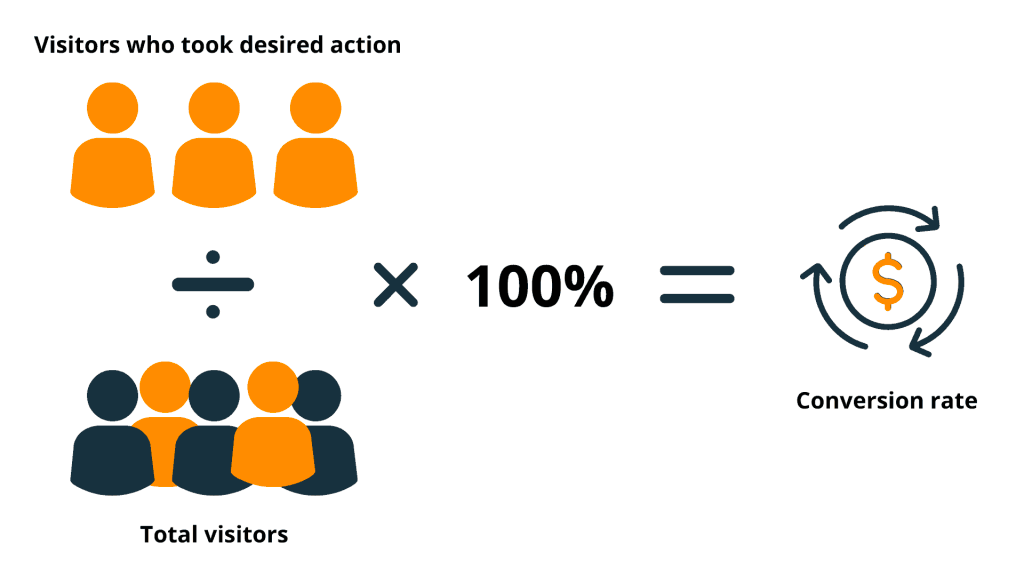
Image credit: https://www.onepagecrm.com/
In affiliate terms, this is your conversion rate. It’s the ratio of clicks to actual purchases. By understanding your conversion rate, you’re essentially gauging the effectiveness of your promotional efforts and the product’s appeal.
If you notice that a large number of people are clicking on your affiliate link, but not many are buying, it could signal a mismatch.
Maybe the sales page isn’t convincing enough, or the product isn’t as appealing to your audience as you thought it would be.
Knowing the program’s conversion rate AND your own is essential because it helps you decide if it’s worth continuing with a particular product or even a particular audience. If not, you might want to consider some changes in your approach.
Evaluating Commission Structures
There are various types of commission structures available as an affiliate.

Image credit: affistash.com
Knowing which one system is generally implemented within your chosen affiliate marketing niche is important.
Understanding this helps you decide where to invest your time and resources for the best return on investment (ROI).
Here are a few other key commission structure factors to consider.
The Importance of Recurring Commissions
Imagine planting a tree in your backyard that drops money every month. That’s the beauty of recurring commissions in the affiliate world.
Recurring commissions ensure you keep getting a share of the income as long as customers stay on board.
Said differently, your initial effort to get that customer can reward you multiple times. These payments can accumulate over months or even years. They also provide a more predictable and stable income stream.
Whether you’re just starting out or have been in affiliate marketing for years, focusing on such opportunities can be a smart move.
Some industries are better geared towards recurring commissions than others. Software as a service (SaaS) products are more likely to offer such deals.

Image credit: supermetrics.com/
With the churn rate (i.e., the percentage of customers who stop using a product/service within a certain period) being lower in SaaS than in other industries, you stand to gain more from each customer you sign up.
Affiliate Program Bonuses & Incentives
Think back to when you put in extra effort in school or at work, and someone noticed and rewarded you. Feels good, right?
In the affiliate landscape, bonuses serve a similar purpose. They are like a pat on the back for doing an exceptional job. Some affiliate programs offer bonuses to their top performers, recognizing the effort it takes to stand out.
Here are some examples:
- Performance Bonuses: Affiliates receive extra rewards for hitting specific targets, such as a set number of signups or a particular earnings amount. These bonuses encourage strategic planning.
- Tiered Bonuses: Affiliate programs may have levels. As affiliates achieve more signups, they climb these tiers, earning extra rewards beyond their standard commissions. For instance, surpassing a signup threshold might label an affiliate as a “Super Affiliate,” earning them additional bonuses.
- Gamification Bonuses: Using gaming elements, like streaks with bonuses or enhanced commission rates at set milestones. This can make programs within competitive affiliate marketing niches more interesting for affiliates. In a recent survey, 90% of respondents stated that gamification improves productivity.
- Additional Incentives: Apart from cash rewards, affiliates can be motivated with gifts, special offers, or exclusive deals. These gestures foster goodwill and strengthen affiliate relationships.
For an affiliate marketer, bonuses can boost earnings and motivate the person to keep pushing.
It’s always a good idea to see if the program you’re eyeing offers such incentives. Not only does it show that they value their affiliates, but it also presents you with an opportunity for that extra earnings boost.
Creating High-Quality Content
You’ve chosen your niche, done your research, and now it’s time to start creating content.
You have a world of possibilities right in front of you. How do you start?
Focus on high-quality content. Here’s how to do it.
Understanding Audience Pain Points and Addressing Them
Addressing audience pain points isn’t just a good idea —it’s necessary. Content that truly helps and solves real-world problems attracts success.
Understanding pain points means you can’t just assume what people want or need. Assuming is not only time-consuming, but it’s also a waste of valuable resources.
Think about this: You go to your family doctor, sit down, and immediately get a diagnosis. The doctor doesn’t even ask you any questions to discover what you’re going through.
Strange, right?
So, how do you understand people’s pain points?
Forbes says: Don’t Make This Complicated: Ask Them
Send out surveys, host focus groups, join online communities or forums, and read comments people have made about similar topics.
Then, you can move on to the next step.
Speak to people in a language they understand
Once you know what people’s pain points are, you can speak to them in a language they can understand.
For example, 10beasts.com is an affiliate website that went from making no money to earning several thousand a month.

How?

Image credit: https://nichepie.com/amazon-affiliate-site/
Its founder focused on understanding what his audience in the tech and gadgets world really wanted. He did this through keyword research by looking for the exact words and phrases people were typing into search engines.
By doing this, he discovered their main problems or needs. Then, he wrote articles and content that answered those needs.
This led to him making $4,500+ a month. Later on, he sold the website for a lot of money.
The key takeaway? Understand your audience’s problems and create content that helps them. It sounds simple, but it requires effort and understanding.
Real-World Success: Case Studies
Let’s now look at a real-world example of affiliate marketing success.
FinvsFin.com
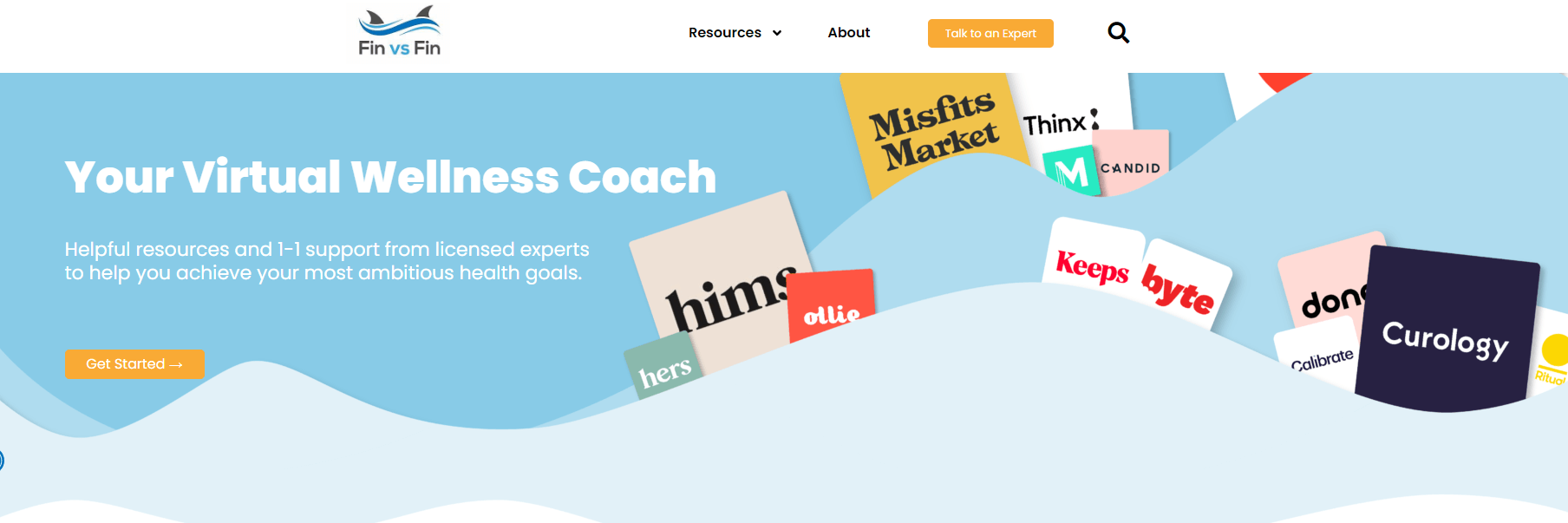
In the world of affiliate marketing, the story of Fin vs Fin stands out. Founded by Alex Goldberg and Healy Jones, two listeners of the Side Hustle Show, this website has managed to carve a niche for itself in the crowded affiliate marketing space.
In just a little over a year, FinvsFin.com has grown to generate a monthly revenue of $17-20k, a feat that is both impressive and inspiring.
What is FinvsFin.com?
FinvsFin.com is a modern comparison shopping site that focuses on reviews and comparisons of direct-to-consumer brands.
They promise to offer 1:1 coaching and expert resources for a variety of health-related categories:

When someone wants more information, they get redirected to specific affiliate promotions:

They also offer an email newsletter that helps them get people on their list and start developing a relationship with customers.

People can also read in-depth reviews about various products that can help them with their health. For example, here’s an example of a blog post about a supplement that can help with gray hair.
Want to know how to write affiliate blog posts that make money? Here’s how:
What makes their story even more remarkable is that both Alex and Healy have full-time jobs.
This makes FinvsFin a side hustle that falls under the “passive income” business model.
Content creation and marketing strategies
Alex and Healy have a strategic approach to content creation and marketing. They prioritize their content (80% of which is written by freelancers) based on what works best for their audience.
They also engage in on-page SEO, creating links, and managing partnerships to boost website traffic.
Their strategies can be borrowed and applied to other niches, making their journey a valuable case study for anyone looking to venture into affiliate marketing.
Convertica
This one is more of an advanced case study that shows you that affiliate income can add up significantly with the right process in place.
Convertica is a CRO agency that helps increase conversions on a website. Their case study shows how they skyrocketed an affiliate site’s monthly revenue by an extra $15,048 in just 34 days.
The website, operated by a client named Robert, was already performing well with a monthly revenue of $20,403. However, through strategic conversion rate optimization, the Convertica team was able to bring the monthly revenue up to $35,451.
They then continued to build the revenue over time.
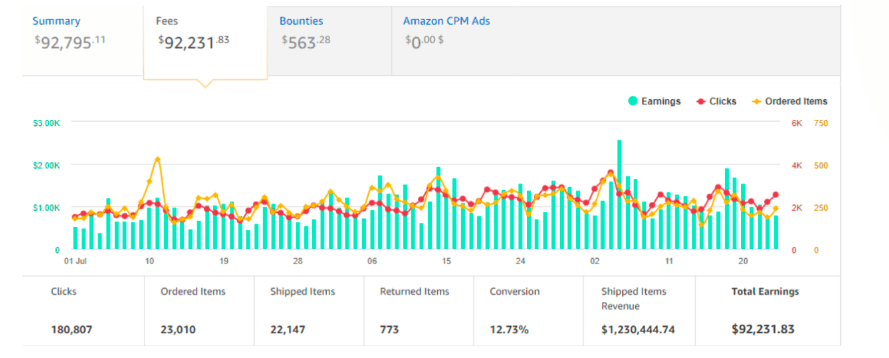
How did the team increase affiliate conversions?
The process they followed focused on identifying and optimizing the 20% of the website that was generating 80% of the clicks and revenue.
They utilized heat maps to understand user behavior, identifying where users were clicking and which call-to-action elements were most effective.
The power of 80/20
A significant part of the optimization process involved ensuring that the website was fully optimized for mobile users.
With the majority of internet users accessing websites through their mobile devices, it’s crucial to ensure that every element of a site is mobile-friendly.
The team also focused on creating clear and easily clickable call-to-action buttons, understanding that user experience plays a crucial role in conversion rates.
By applying the 80/20 rule, the Convertica team was also able to quickly identify the areas of the website that needed attention and optimization.
Best niches for affiliate marketing – FAQ
What are some evergreen affiliate marketing niches?
Here are some of the top niches within the evergreen affiliate marketing vertical: health and wellness, beauty, finance, dating & relationships, home & garden, and pet care.
What are some high ROI / profitable affiliate marketing niches?
High ROI (profitable) niches include gaming, crypto and blockchain technology, web hosting services, software development tools and services, and online courses/education platforms. All of these usually have a higher commission rate than other niches. They also generally have steady demand from customers who are willing to spend money.
Wrap Up.
Choosing an affiliate marketing niche is a crucial first step to starting your own business.
Defining what “best” really means for you and your business goals is critical. Then, take the time to consider your interests and experiences, as well as the demand for related products.
Once you have identified a niche that has potential, do research to ensure it is viable and profitable.
My final piece of advice: do not just jump into the first niche you come across—do your due diligence and find a topic that is right for you and can yield good returns.




